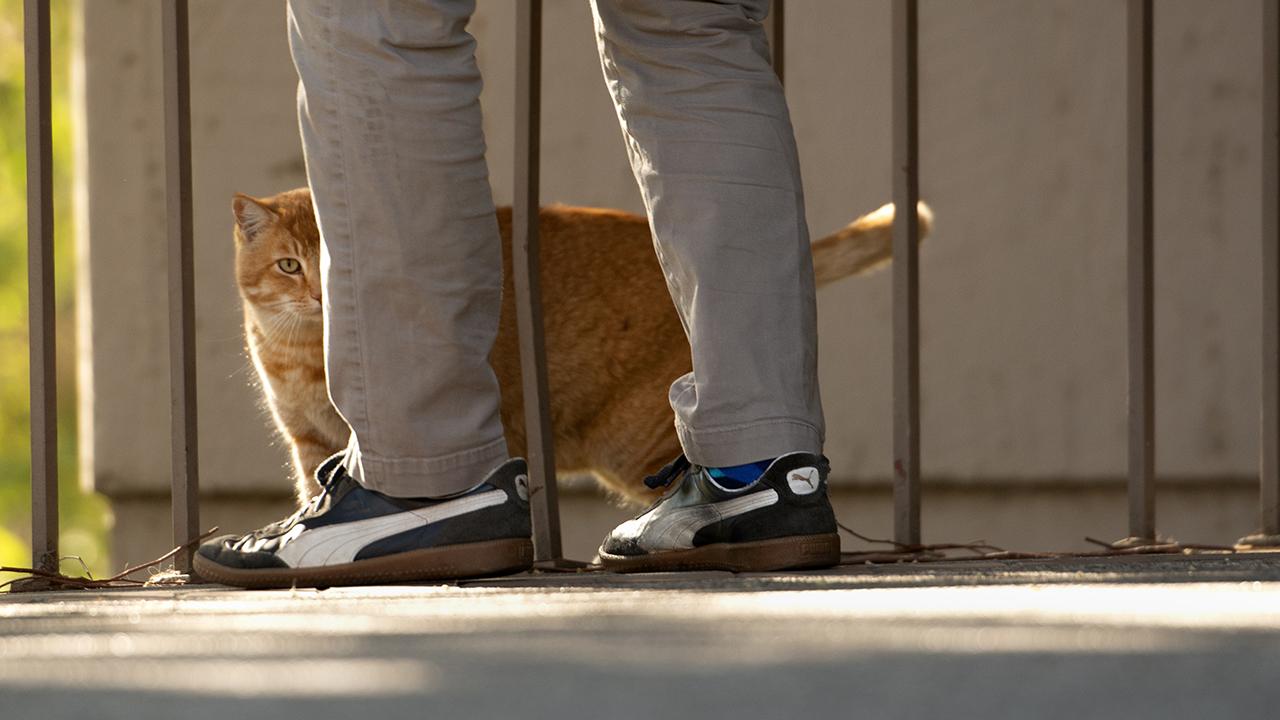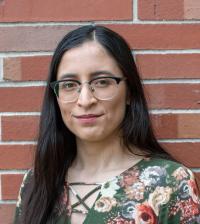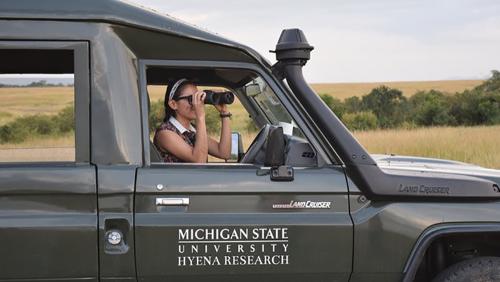
Researcher Studying the Microbiome and Chemical Communication of Cats Named a Chancellor’s Postdoctoral Fellow
There are myriad ways to view the world. Some people view it through the lens of art, others through the lens of anthropology or psychology. But Connie Rojas views the world through the lens of biology.
“Everything around you—the tree outside, how tall it is, the bark—everything makes sense when viewed through the lens of biology,” said Rojas, who was selected to join UC Davis this year as a 2021-2022 Chancellor’s Postdoctoral Fellow. “That type of thinking was very intuitive for me growing up.”

Launched in 1984, the Chancellor’s Postdoctoral Fellowship program encourages outstanding women and minority Ph.D. recipients to pursue careers within the University of California system. The program offers research support and faculty mentoring to outstanding scholars in all fields whose research, teaching, and service contribute to diversity and equal opportunity at the University of California.
As a fellow, Rojas joined the lab of Professor of Evolution and Ecology Jonathan Eisen, where she’s asking big questions about some of the smallest organisms on the planet: microbes. Specifically, Rojas is interested in understanding the evolution and function of scent gland microbial communities (also termed microbiomes) across the feline family. Felines use such scent glands to mark their territory and communicate with one another.
“You have these bacteria that reside in the scent gland and some of them may actually be responsible for synthesizing the odors that other animals pick up on,” said Rojas. “They form part of their chemical communication.”
But microbes are pivotal in more than just chemical communication. The makeup of a bacterial community may influence the overall health of an organism.
“Microbiome research has exploded in recent years, but it’s still a relatively young field compared to other fields of biology,” said Rojas, “There is still much to uncover regarding the interactions between organisms and their microbiomes.”
How small things affect the big picture
Rojas first became interested in microbiomes while completing her undergraduate degrees in biological sciences and psychology at Wellesley College in Massachusetts. As a biological sciences major, she spent her time investigating the contributions of microbial communities to nutrient cycling in lakes; as a psychology major, she found herself deeply interested in social behavior.
“I’m fascinated by why animals do what they do, and the same with humans,” said Rojas. “What motivates us? What affects us? What affects our decision-making and how we interact with other individuals and our environment? I’m interested in the same questions in animal systems.”
Rojas began investigating these questions more deeply while pursuing her Ph.D. degree at Michigan State University. In the lab of Professor of Zoology Kay Holekamp, Rojas sifted through decades’ worth of data and samples from wild hyenas living in the Maasai Mara National Reserve in Kenya.

“My interests converged during the beginning of my grad program,” said Rojas, who, at the time, decided to investigate the microbial communities living in the gut, scent glands, and other body parts of hyenas.
Using the collected data, Rojas successfully mapped out trends in gut microbiome variability throughout the lifespans of the studied hyenas. She and her colleagues not only ascertained how microbiomes vary between hyenas of different social positions and matrilines, they also used the data to investigate how trends in the hyenas’ environment, including changes due to tourism, impacted the structure of their microbiomes.
“We saw really dramatic changes in the gut microbiome occurring in certain years that coincided with changes in the landscape,” said Rojas. “For example, one of those years was 2008, which was a time when there was a large increase in the number of tourist lodges being built in the reserve.”
As tourism increased, Rojas and her colleagues saw an overall decrease in the numbers of herbivores and carnivores, including lions. But hyenas seemed unperturbed by the presence of humans. In fact, they thrived.
“Hyena densities were booming and their social groups were getting bigger and bigger because they were doing well,” said Rojas. “Collectively, these changes in the hyenas’ environment likely led to significant and marked changes in their microbiome.”
Down the microbial rabbit hole
At UC Davis, Rojas is working with the Eisen lab to expand their research on the scent glands of domestic cats. Mammals, including hyenas and cats, often leave evidence of their presence via secretions sprayed from their scent glands, which are situated around the anus.
“The secretions that they leave behind can tell you something about the sex of the individual, the age, or if it’s from an individual outside of their social group,” said Rojas. “There are certain demographic things that are left behind in these profiles.”
Sometimes, these scent glands can become infected and diseased, leading to discomfort for the cats and headaches for pet owners. Uncovering the differences between the microbial communities of healthy scent glands and diseased scent glands could lead to new interventions that help prevent infection.
Moving forward, Rojas will analyze samples from the scent glands of domestic cats to build microbial and chemical profiles to better understand the variation present in these communities, and their contributions to cat health and behavior.
“Once we get the bacterial swabs, we’re going to plate them on different kinds of nutritional media that will hopefully be able to grow some of these microbes that are found in the scent glands,” said Rojas. “We will also identify the chemical compounds present and use genomic tools to link the microbes present to the production of those compounds. The more we know, the more we can come up with ways to maintain the microbiome and prevent disease.”
Already, Rojas is fostering interdisciplinary collaborations with other experts and mentoring talented undergraduate students in the Eisen lab. She aims to continue working for the University of California after her fellowship.
